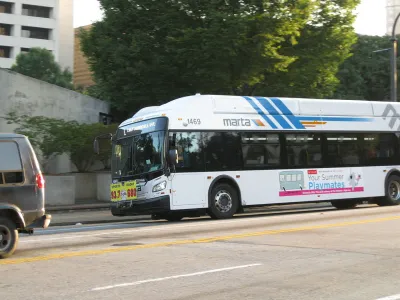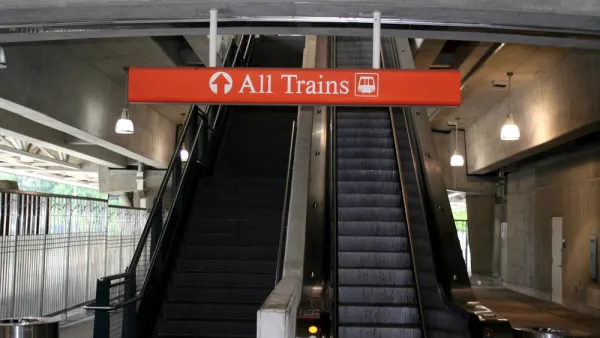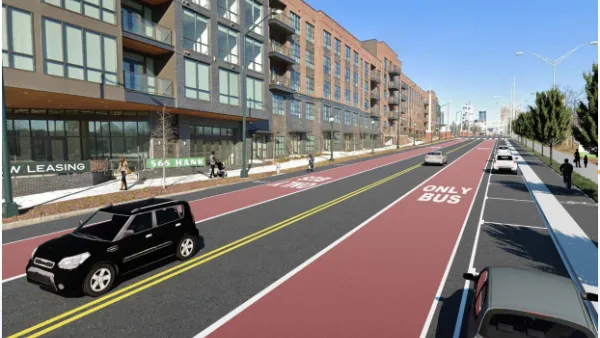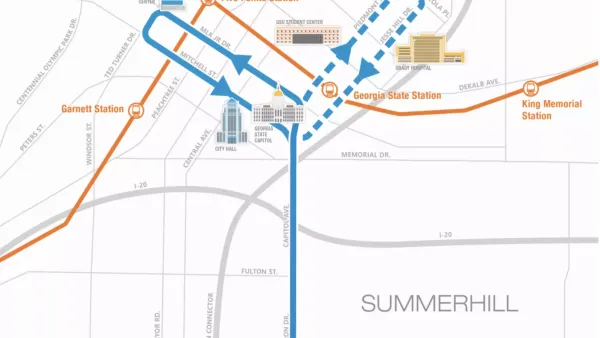Light rail on the Clifton Corridor was once a centerpiece of a $2.7 billion, 40-year transit expansion plans funded by a voter-approved sales tax. Now MARTA is considering using bus rapid transit on the corridor instead.

The Metropolitan Atlanta Rapid Transit Authority (MARTA) is reconsidering its plans to add light rail transit along the Clifton Corridor between Emory University, the Lindbergh Station, and the Centers for Disease Control, announcing that it's now studying bus rapid transit (BRT) for the corridor. The BRT plans for the corridor are the latest sign that MARTA is backtracking from the details of plans announced in late 2018 to expand the city's light rail system, using sales tax revenues approved by voters in 2016.
In an article for the Atlanta Journal Constitution, David Wickert reports that MARTA plans to select a preferred alternative for the Clifton Corridor by October, according to a report from interim CEO Collie Greenwood to the Atlanta City Council transportation committee in March.
MARTA's sudden attention to BRT on the Clifton Corridor is the latest evidence of a trend, reports Wickert: "In February, MARTA announced it would recommend bus rapid transit instead of light rail for the Campbellton Road line in southwest Atlanta. And a recent preliminary report on a section of the Atlanta Beltline found light rail would cost far more than expected."
The original plan also included plans for 13 miles of bus rapid transit lanes in addition to 29 miles of new light rail. As mentioned by Wickert, MARTA is already making progress on the BRT. "MARTA already is preparing to build the region’s first bus rapid transit line along Hank Aaron Drive and Capitol Avenue in Atlanta."
Officials from Emory University (the university has supported the proposed transit along the Clifton Corridor in the past) are quoted in the article saying they support either BRT or light rail for the corridor.
FULL STORY: MARTA considers rapid buses for Atlanta’s Clifton Corridor

Analysis: Cybertruck Fatality Rate Far Exceeds That of Ford Pinto
The Tesla Cybertruck was recalled seven times last year.

National Parks Layoffs Will Cause Communities to Lose Billions
Thousands of essential park workers were laid off this week, just before the busy spring break season.

Retro-silient?: America’s First “Eco-burb,” The Woodlands Turns 50
A master-planned community north of Houston offers lessons on green infrastructure and resilient design, but falls short of its founder’s lofty affordability and walkability goals.

Test News Post 1
This is a summary

Analysis: Cybertruck Fatality Rate Far Exceeds That of Ford Pinto
The Tesla Cybertruck was recalled seven times last year.

Test News Headline 46
Test for the image on the front page.
Urban Design for Planners 1: Software Tools
This six-course series explores essential urban design concepts using open source software and equips planners with the tools they need to participate fully in the urban design process.
Planning for Universal Design
Learn the tools for implementing Universal Design in planning regulations.
EMC Planning Group, Inc.
Planetizen
Planetizen
Mpact (formerly Rail~Volution)
Great Falls Development Authority, Inc.
HUDs Office of Policy Development and Research
NYU Wagner Graduate School of Public Service




























